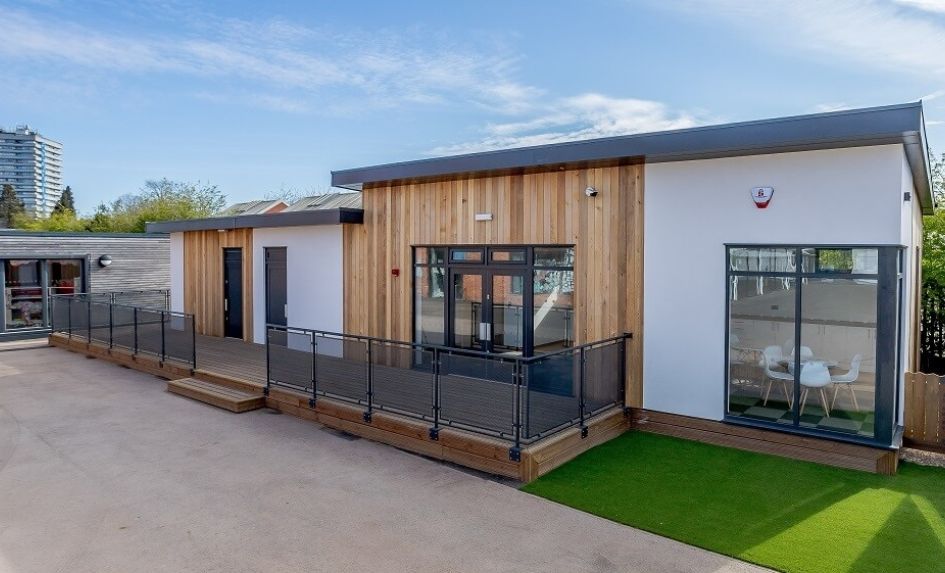If your setting is in need of extra space, a modular building can be an excellent option for schools. Cheaper than a traditional build, modular school buildings are also quicker, less disruptive and have lower environmental impact.
There are broadly two types of modular buildings:
Sectional modular – this means that the components are manufactured then pieced together on-site
Volumetric modular – this refers to complete units being transported to site
The sectional approach generally requires less transportation energy and offers more flexibility in site location and bespoke building design.
Cost of modular school buildings
Manufacturing of modular school buildings can take place off-site while groundworks get underway. This, along with the speed of construction, reduces time spent onsite by up to 70 per cent versus a traditional build.
Once you’ve attained planning approval, a smaller modular school building can take just six weeks on-site from foundation laying to completion. Furthermore, the modular process usually costs significantly less than traditional building methods. Larger modular school buildings can cost as little as £1,500 per sqm.
Disruption and quality control
Components are manufactured in a controlled environment. This means they are kept dry and safe until they are delivered to site precisely as they are needed. This also means less disruption as the building site can be self-contained and site access managed accordingly.
Environmental impact of modular school buildings
Modular school building construction uses less energy than traditional methods. In addition, when you use timber as the primary material, along with low-impact foundations, it reduces the embodied carbon of the building. This results in a much lower environmental impact.
Access to the outdoors and biophilic design
Easy access to the outdoors and nature helps with wellbeing and can improve educational outcomes. You can use large external doors to easily access deck areas and wide canopies.
Most of TG Escapes’ buildings are inherently biophilic, using predominantly natural materials and a design that provides huge amounts of natural light. They can also feature more biophilic design elements such as nature spaces outside and natural murals inside.
Energy efficient and healthy
To achieve an A+ energy rating, make use of sun pipes, solar PV, smart lighting, wood fibre insulation, reduced thermal bridging and airtight construction.
Adaptable ventilation systems can reduce heating bills by a factor of three, as well as providing a healthy, hygienic interior air quality in schools. Living roofs also help to reduce water runoff.
Modular timber-framed eco buildings can be used not just for classrooms but for administration offices, staff rooms, studios, sports facilities, canteens and training centres.
Many schools use the opportunity of a new modular school building to rethink how to use the existing space. For example, creating a performing arts studio could free up the school hall; building a separate staff room and offices could create more teaching space or creating a dedicated SEND classroom can help with access issues.
Mark Brown is a consultant at TG Escapes. For more information email info@tgescapes.co.uk









